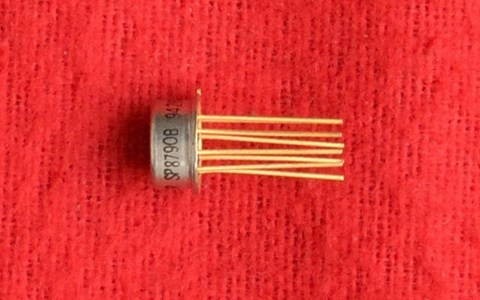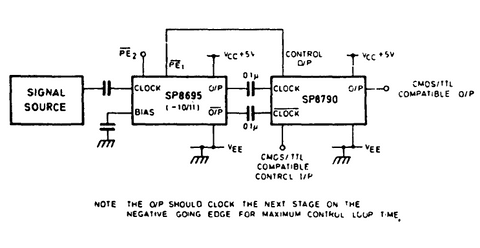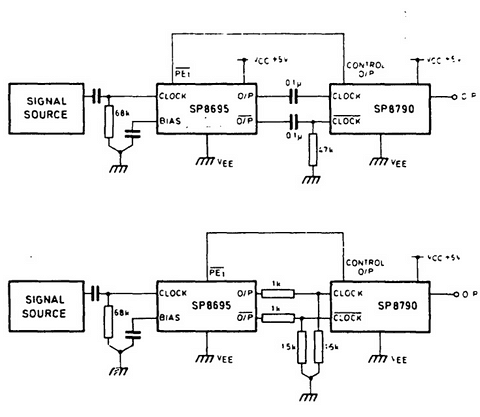SP8790 Modulus Extender
Description
The SP8790 is a divide-by-four counter designed for use with 2-modulus counters. It increases the minimum division ratio of the 2-modulus counter while retaining the same difference in division ratios. Thus a divide-by-10 or 11 with the SP8790 becomes a divide-by-40 or 41; a divide by 5 or 6 becomes a divide by 20 or 21.
The function is especially useful in low power frequency synthesisers because it can bring the output frequency of the combined 2-modulus counter and SP8790 into the region where CMOS or low power TTL can control the divider. The power-saving advantages are obvious.
The device interfaces easily to the SP8690 range of divide by 10 or 11. The control inputs are TTL and CMOS compatible, and the output is a free collector which, with the addition of a pull-up resistor, interfaces to CMOS and TTL.
The SP8790 is available in three temperature grades: 0°C to +70°C (SP8790B) -55°C to +125°C (SP8790A)
The SP8790 requires supplies of 0V and +5V ±0.25V.
Features
- Ultra-Low Power: 40mW
- Full Military Temperature Range
- I/P and O/P Interface Direct to CMOS/TTL
Quick Reference Data
- Supply Voltage: +5V ±5%
- Max Frequency: 60MHz
- Operating Temperature Range: -55°C to +125°C
Operating Notes
A typical application to give a ÷40/41 function is shown in Fig. 1. In this basic form, however, the devices will self-oscillate if no input signal source is present. This may be prevented by using one of the arrangements shown in Fig. 2.
The device usually is driven from a 2-modulus divider which has fast output edges. Hence there is normally no input slew rate problem.
TTL devices require a pull-up resistor to ensure the necessary minimum of 3.5V. Note that the device can interface from 10V CMOS with no additional components.


